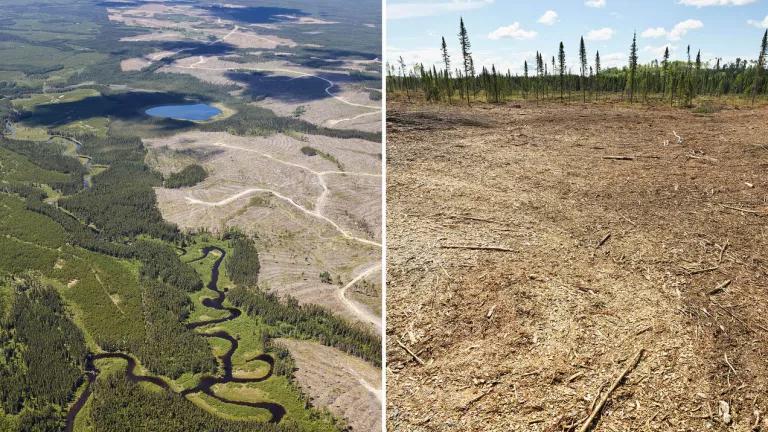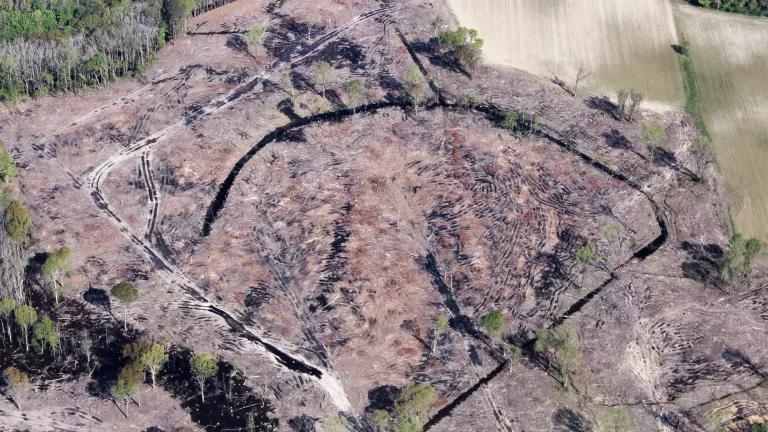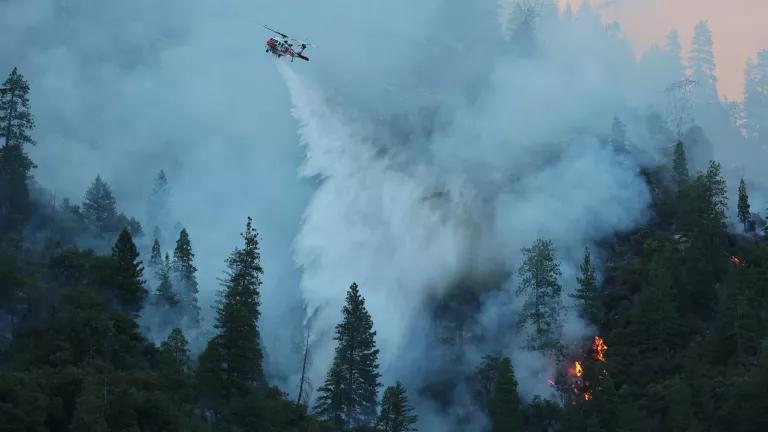
Firefighters drop water on the Dixie Fire in California on July 14, 2021.
As communities across the West are feeling the effects of unprecedented heat waves and drought, wildlife is also suffering with nowhere to escape this hot and fiery new climate. Like humans, most animals are adapted to specific temperature ranges, but many animals struggle more to stay hydrated or to cool their bodies off in extreme heat. As habitat is increasingly fragmented and water becomes less available, compounding stressors make it hard for wildlife to move and adapt to meet their survival needs. Haunting stories of baby raptors hurling themselves out of nests, bears venturing into busy urban areas in search of water, and a billion dead shellfish on Canada’s Pacific coast underscore the urgency with which we must act. The impacts of climate change are already devastating and undeniably overlap with the biodiversity crisis. Leading climate and biodiversity experts recently concluded that we must tackle both crises together to protect a livable future for all of earth’s inhabitants.
Warming waters
With 95 percent of the Western U.S. currently facing drought conditions, and 86 percent of land facing “severe”, “extreme”, or “exceptional” drought, less water is available to sustain diverse life. Some streams have dried up while others suffer from low flows and warm temperatures that can stress fish and amphibians, making them more susceptible to infectious diseases and harmful algal blooms. Recent video footage shows salmon in Washington’s Columbia River Basin dying from lesions, fungal infections, and heat stress in hot, stagnant waters created by hydropower reservoirs, especially the lower Snake River dams. Not even the higher-elevation, undammed waters in Yellowstone National Park have been spared from the heat, forcing the National Park Service to reduce fishing hours on all of the park’s rivers and streams to reduce the impacts of “high water-temperatures and unprecedented low stream flows” on native, cold water fish.
Heat-stressed sockeye salmon dying in the Columbia River Basin. Sockeye footage by Conrad Gowell, video produced by Modoc Stories and courtesy of Columbia Riverkeeper.
Heat-stressed wildlife
In the Northern Rockies region—home to some of our country’s most prized large landscapes and beloved wildlife—the extreme heat, wildfires and drought are impacting animals in both visible and invisible ways. For wide-ranging animals like grizzly bears, drought, heat, and wildfire are reducing the availability of key food sources and forcing bears to venture into human-dominated landscapes where they are more likely to come into conflict with people and end up dead. Additionally, lactating female bears are more impacted by warming weather and seek out cool water baths to alleviate heat stress. As drought takes hold across the landscape, these important “bathtubs” may become less available to breeding female bears, which are critically valuable to the future of grizzly bear populations.
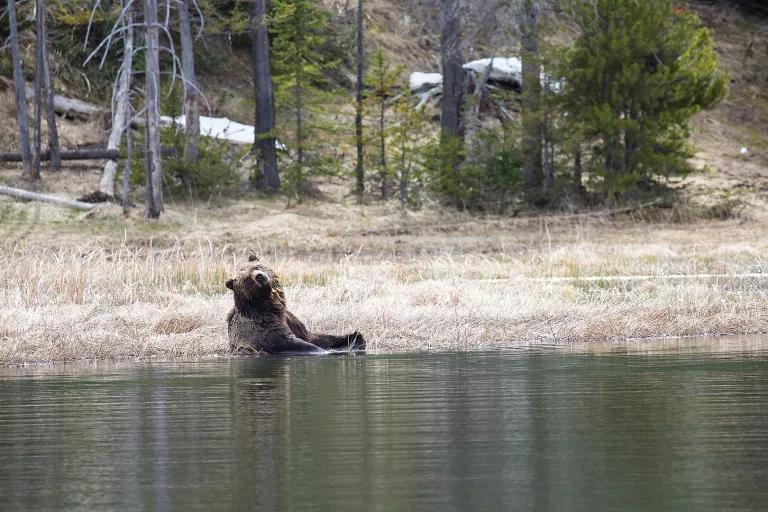
A grizzly bear soaks in a wetland in Yellowstone National Park.
Adding climate stress to habitat loss
Drought and heat compound the stress wildlife are already facing from habitat loss and fragmentation. For the greater sage grouse—which serves as an indicator of the health of sagebrush ecosystems—drought can have dramatic impacts on the population because it reduces water and food availability and causes high rates of chick mortality. These birds were already suffering from diminished habitat due to oil and gas drilling, livestock grazing, and other impacts. The added stressors that come with climate change will push them to the brink.
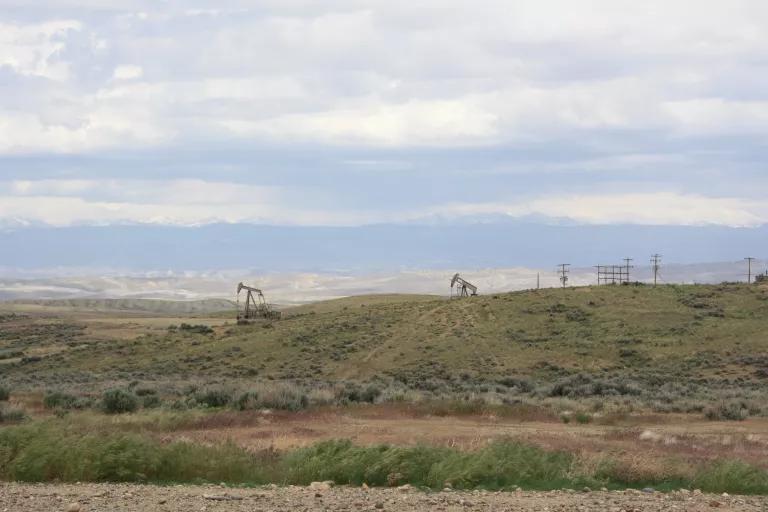
Pump jacks leased to oil and gas developers fragment habitat on public lands in Wyoming.
Flickr/BLM Wyoming
Where we go from here
As we mourn the suffering and loss taking place under the West’s smokey skies, we must compel lawmakers to pursue solutions that address both the climate and biodiversity crises. Top climate and biodiversity scientists have provided guidance on where we should start. Below are ways we can put their recommendations to work across the West.
- Protect and restore intact and carbon-dense ecosystems. By providing Indigenous and local communities the resources they need to develop and implement solutions to protect 30 percent of land and freshwater by 2030 we will save more space for wildlife to adapt as the climate changes.
- Increase instream flows and restore riparian areas. By increasing stream flows, restoring riparian areas, and removing some dams, like those on the lower Snake River, we will aid fish and wildlife movement and decrease water temperatures. Species such as salmon and beavers help combat climate change and are keystone species upon which webs of wildlife depend.
- Increase sustainable agricultural and forestry practices. If we increase the use of regenerative agricultural practices, more farmers and ranchers can raise livestock and grow crops in harmony with nature while improving the water cycle, reducing the use of chemicals and synthetic fertilizers, and supporting biodiversity outcomes.
- Stop subsidizing activities that harm biodiversity. For example, if we end oil and gas leasing on public lands and transition to renewable energy such as wind and solar, we can reduce greenhouse gases and set aside more habitat for species like sage grouse and pronghorn.


